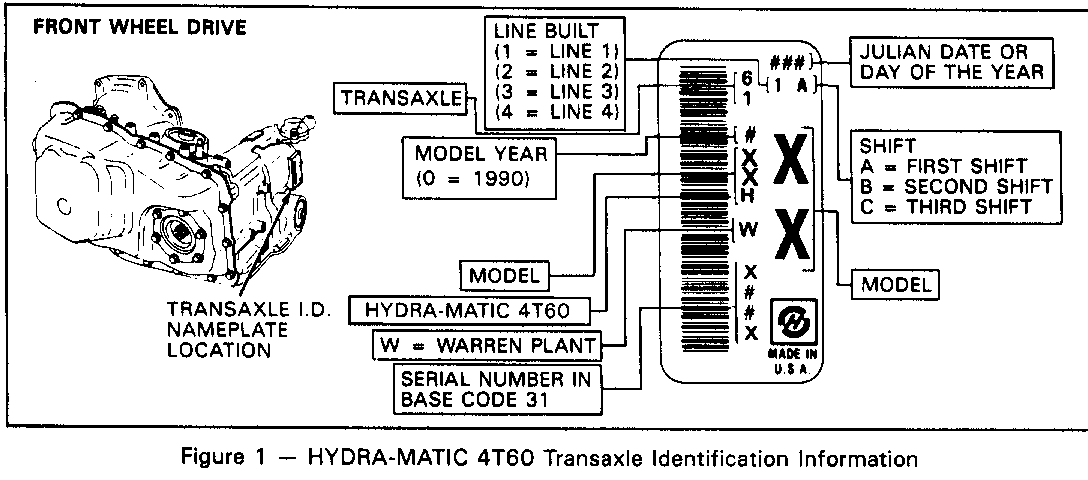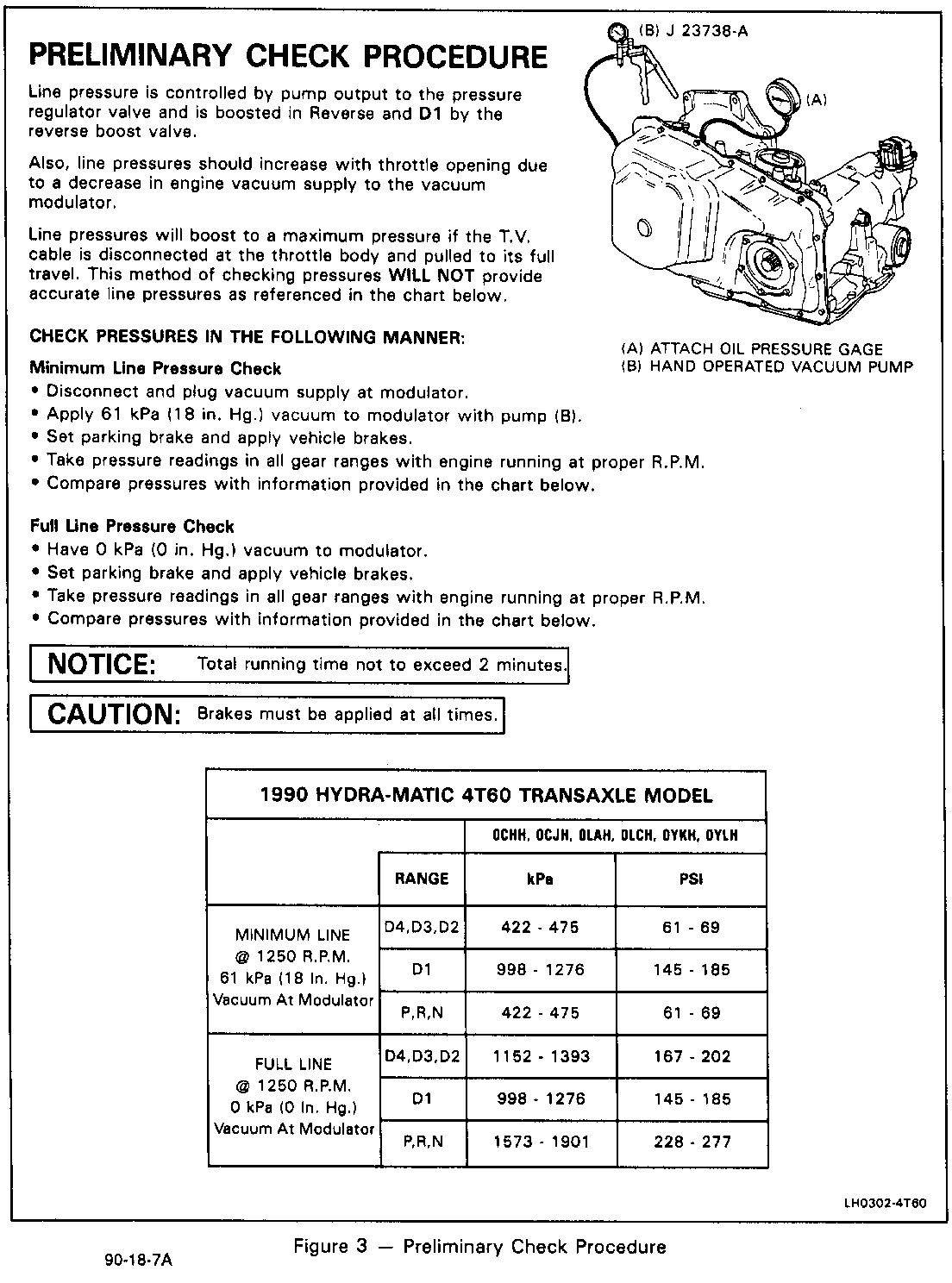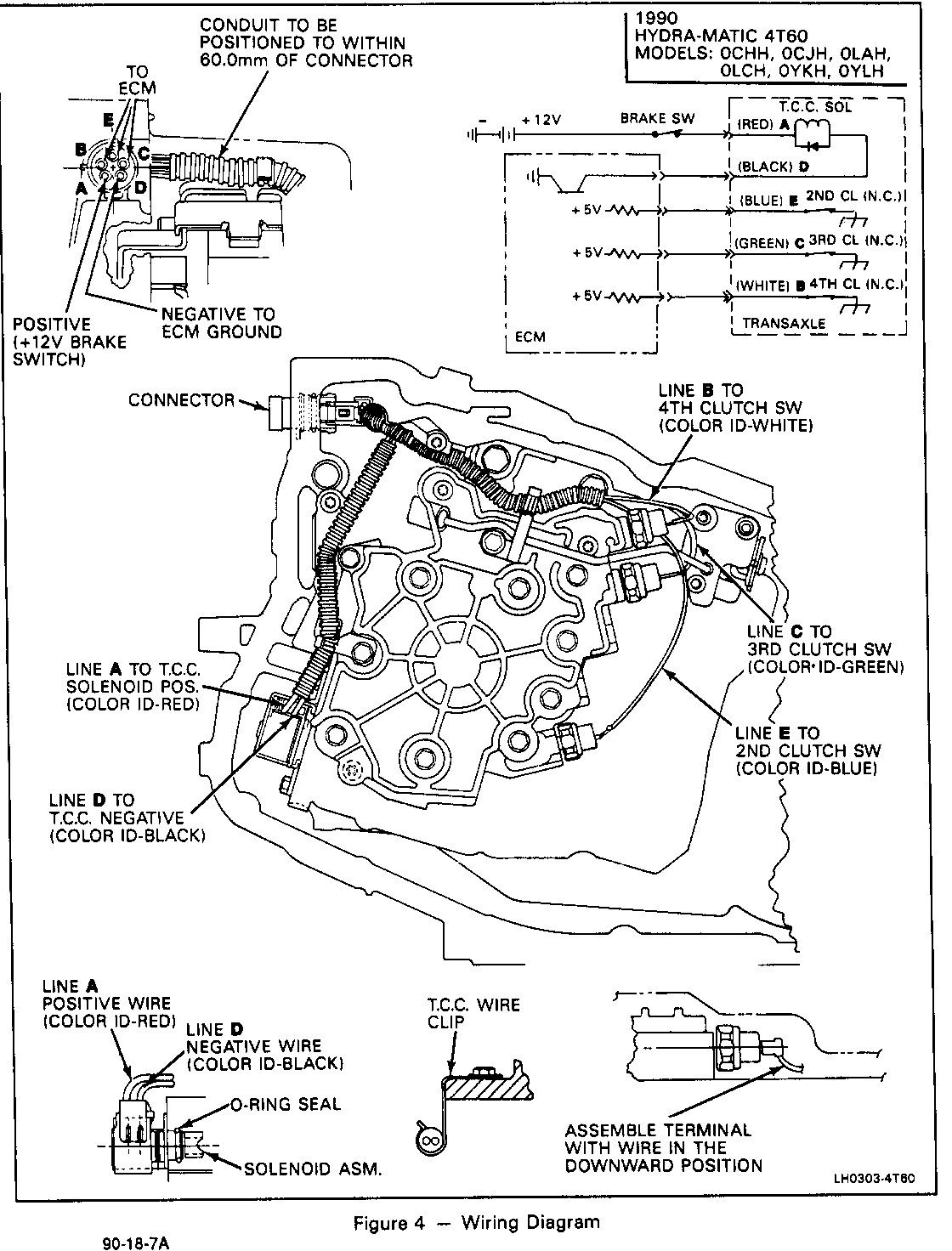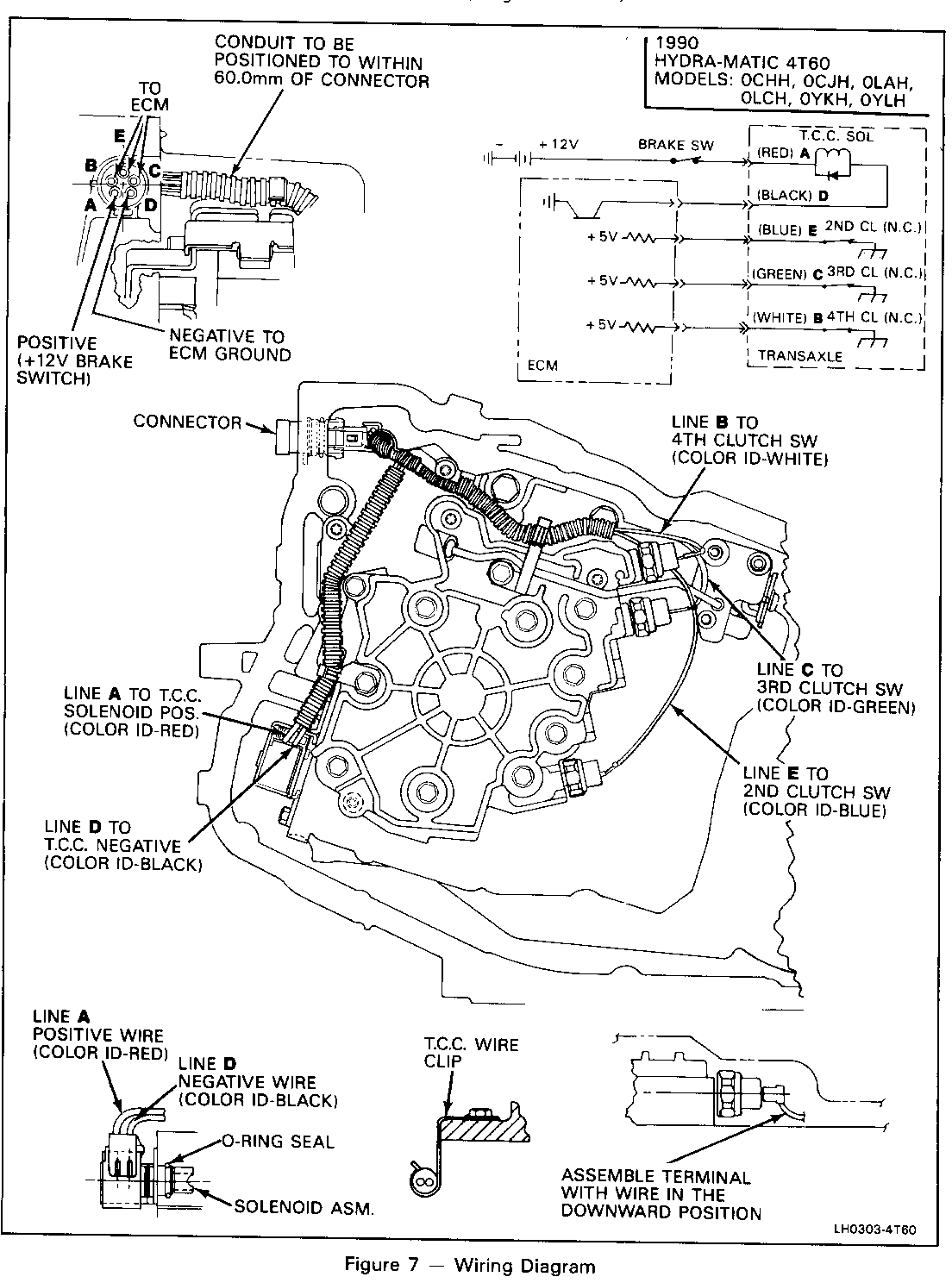PRELIMINARY DIAGNOSIS AND DESCRIPTION/NEW TRANSAXLE-4T60

MODELS AFFECTED: 1989 REGALS
Some 1989 Regals are being manufactured with 1990 440-T4/Hydra-matic 4T60 transaxles. These transaxles, models OCHH, OCJH, OYKH and OYLH can be identified from the transaxle I.D. nameplate (Figure 1).
SERVICE MANUAL REFERENCE:
Reference the following information when servicing a 1990 model. All other instructions and procedures are the same as published in 1989 Service Manuals. Refer to the appropriate Automatic Transaxle Diagnosis section in the 1989 Service Manual for information not covered in this publication.
SUBJECT: New Shift Speed And Oil Pressure Charts
CHANGE TO ASSEMBLY COMPONENTS:
The 1990 Hydra-matic 4T60 transaxl,e shift speed and oil pressure charts have been changed for the new 3.1L engines.
SERVICE ACTION: (Figures 2 and 3) -------------- Reference the new shift speed and oil pressure charts when servicing a 1990 OCHH, OCJH, OYKH & OYLH.
SUBJECT: New Wiring Harness to Prevent Pinched/Shorted Converter Clutch Solenoid Wires
BULLETIN COVERS: (Figure 4) ---------------- A revised wire routing for the Torque Converter Clutch Solenoid (TCC) requires a new Wiring Harness. The TCC wires are now routed straight down from the Engine Wire Harness Connector to the TCC Solenoid instead of going around the Oil Pump Body. This change reduces the possibility of the TCC wires becoming pinched/shorted between the Pump Cover and the Case Side Cover Pan during assembly. For this change to occur, a Wire Conduit Clip, for the TCC solenoid has been added to secure the Wire Conduit (TCC).
SERVICE ACTION:
The new Wire Harness will not be available for service. Order the old style wire harness to service these new models. When using the old style wire harness ensure the routing will not allow the TCC wires to get pinched between the pump cover and case side cover pan during assembly. The new TCC solenoid wire conduit clip must be used with the new wire harness.
SERVICE PARTS INFORMATION:
When the supply of the old style wire harness indicated by the asterisk "*" is depleted, the new style wire harness will be available. Part No Description Model Year Model Usage
*8662852 Harness Assembly, Wiring 1990 OCHH, OCJH, OYKH OYLH
8668271 Clip, Wire Conduit (TCC) 1990 All
*Old style wire harness Parts are currently available from GMSPO.







General Motors bulletins are intended for use by professional technicians, not a "do-it-yourselfer". They are written to inform those technicians of conditions that may occur on some vehicles, or to provide information that could assist in the proper service of a vehicle. Properly trained technicians have the equipment, tools, safety instructions and know-how to do a job properly and safely. If a condition is described, do not assume that the bulletin applies to your vehicle, or that your vehicle will have that condition. See a General Motors dealer servicing your brand of General Motors vehicle for information on whether your vehicle may benefit from the information.
